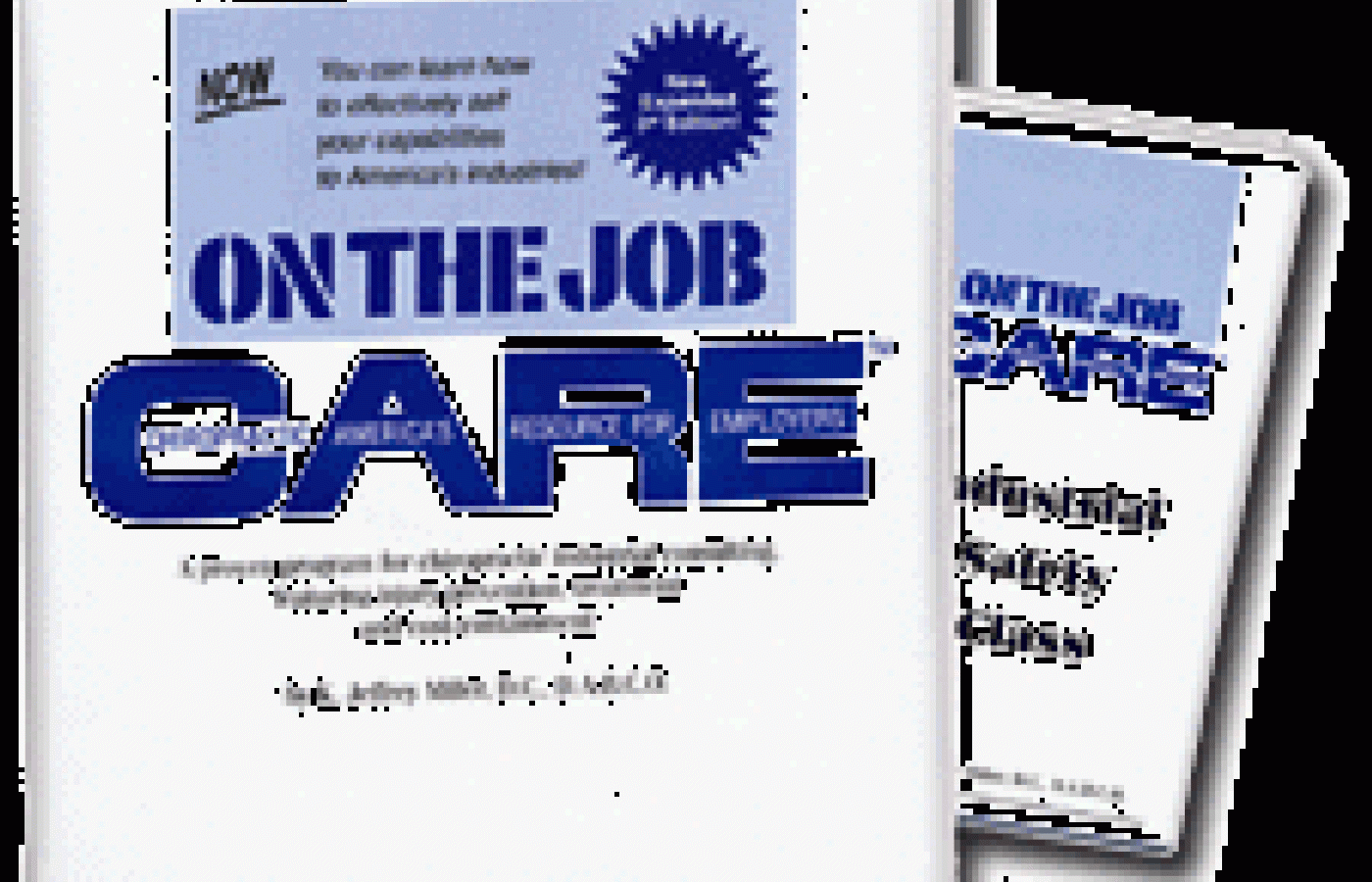On Oct. 21, 2025, a judge in Florida issued a groundbreaking decision in Complete Care v State Farm, 25-CA-1063. It concerns a fact pattern that many chiropractic doctors have faced wherein an insurer, such as State Farm or Allstate, decides to simply stop paying all claims submitted by a healthcare provider.
| Digital ExclusiveOn the Job CARE (Chiropractic America's Resource for Employers)
| Title: | On the Job CARE (Chiropractic America's Resource for Employers) |
| Author: | K. Jeffrey Miller, DCDABCO |
| Publisher: | Self-published |
| Publication: | Three-ring binder (214 pages) + 2 audiocassettes |
| Category: | Doctor Education |
| Price: | $219 plus shipping |
| Part #: | T-231 |

The Ethics of Touch, by Ben Benjamin, PhD, and Cherie Sohnen-Moe, is the best and most thorough book on ethics available for health-care practitioners, particularly those involved in any type of touch therapy. Both authors have tremendous experience and résumés in the field of ethics, and Ben Benjamin has written numerous articles on the subject. He was also the initiator of (and, for four years, chaired) the American Massage Therapy Association (AMTA) Council of Schools Professional and Sexual Ethics Task Force.
The book is divided into nine chapters: Ethical Principles; Boundaries; Dynamics of Effective Communication; Dual Relationships; Sex, Touch and Intimacy; Ethical Practice Management; Business Ethics; Special Considerations in Cases of Trauma; and Supervision. In addition, there are three appendices: Forms, Specialized Protocols, and Codes of Ethics, in which the codes of ethics of various professional organizations have been reprinted.
Any discussion of ethics, either in the abstract or applied to a particular question, is sure to elicit a variety of opinions and judgments; it would be most unusual if the reader, myself included, did not find something with which to disagree. However, the discussion of ethical principles and the particulars of case studies is evenhanded, nondogmatic, logical and ultimately persuasive. Furthermore, the whole tenor of the book is aimed not at simply stating rules and regulations, but at guiding readers to make ethical decisions. There are even some helpful surveys and exercises aimed at discovering and developing an ethical sense.
To be truly useful, any book on ethics must avoid two pitfalls: being too abstract and philosophical, which could allow the reader to agree with everything, but not know how to apply it to practical ethical decisions and behavior; and being a list of do's and don'ts, without a firm intellectual set of principles on which the advice is based. The Ethics of Touch avoids both of these potential pitfalls. It is full of principles and values, but it also is eminently practical, discussing such issues as dual relationships with many anecdotes and case histories.
I have only one quibble with the book. I believe scope of practice is a subject that is full of ethical questions, problems and dilemmas - yet its discussion is limited to seven pages as part of the chapter on Ethical Practice Management. The central dilemma of the practitioner who has primary access and yet is forbidden to diagnose is not adequately addressed, but simply dismissed with the facile distinction between assessment and diagnosis. This isn't enough. Ultimately, all practitioners need to have guidance with the ethical problem of a patient presenting without a doctor's diagnosis, but with signs and symptoms of some common soft-tissue injury that is, in fact, within the practitioner's scope of practice.
There is also the ethical dilemma of what to do when your local laws are at odds with standard practice, or ethical principles. How laws are made are best not looked into too closely by the squeamish; we all know that various groups manage to get clauses into licensure laws for their own purposes (usually turf protection) and these clauses are hated, resented and often ignored. What is the ethical thing to do?
This "complaint" is not so much a serious criticism as evidence that The Ethics of Touch engaged me with its discussion and forced me to think about ethical questions. The bottom line is that this is a very good book both for an ethics course and for the individual practitioner's library. I highly recommend it.
Dr. Savoie's rating:
10 out of 10
If you have authored, published or produced a book, audio or video package that is chiropractic-oriented, educational, nonpromotional and written or produced in a professional manner, and would like it reviewed in Dynamic Chiropractic, please send two copies of the book, video or audiocassette to:
Review Editor
Dynamic Chiropractic
P.O. Box 4109
Huntington Beach, California 92605-4109
Items submitted for review will not be returned.



